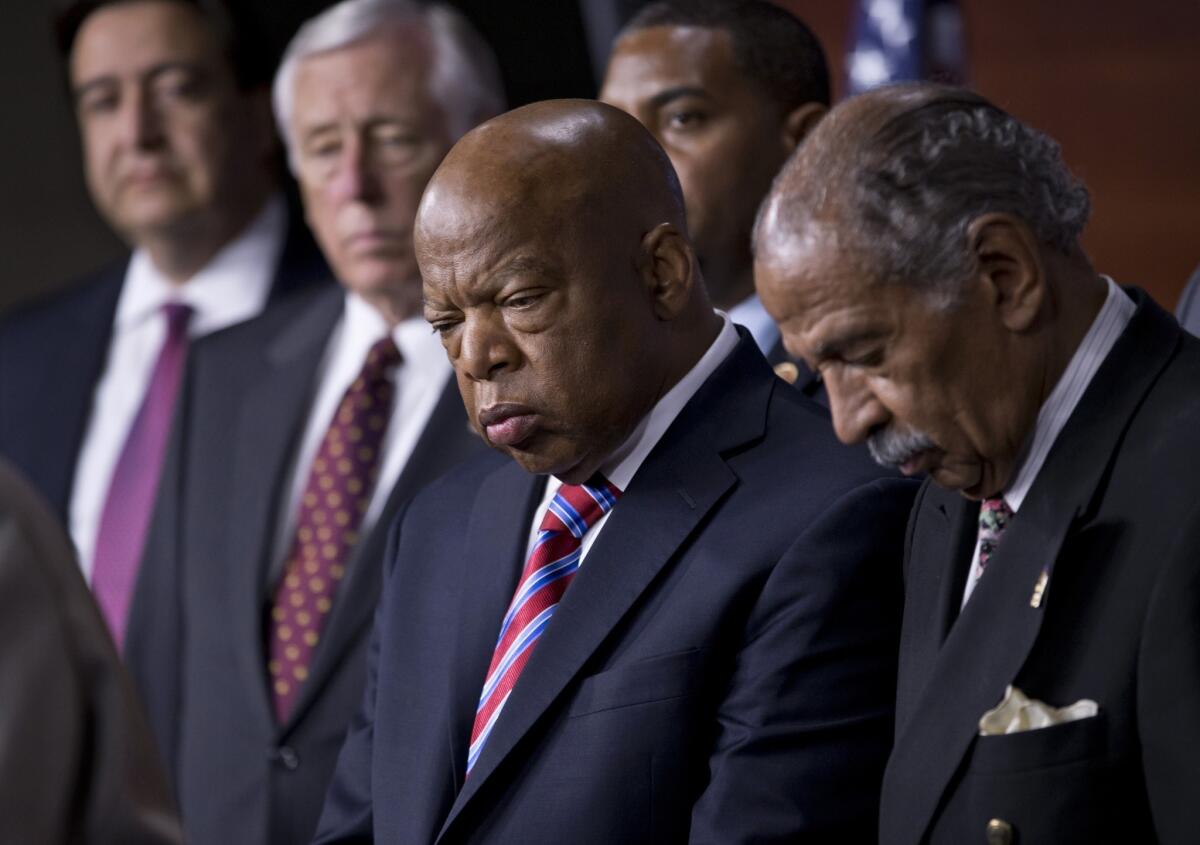A setback for voting rights

- Share via
Tuesday’s Supreme Court decision striking down a key section of the Voting Rights Act won’t bring back the worst excesses that inspired that landmark civil rights law. African Americans in the South seeking to register to vote don’t need to fear that this represents a return to violence, harassment or humiliating literacy tests.
But the unwise 5-4 decision will make it easier for state and local governments with a history of discriminating against minorities to engage in subtler forms of disenfranchisement. The ruling is an unjustified incursion by the court on a power explicitly conferred on Congress by the Constitution to protect voting rights, and it serves the interests of those who would make voting harder, not easier.
Enacted in 1965, the Voting Rights Act contains a nationwide prohibition against racial discrimination in voting. But that protection must be enforced after the fact through time-consuming lawsuits. To provide timelier relief in states and localities with a history of discrimination, the law requires those jurisdictions to “pre-clear” changes in their election procedures with the U.S. Justice Department or a federal court in Washington.
VIDEO: U.S. Supreme Court strikes down key section of 1965 Voting Rights Act
Tuesday’s decision did not, as some feared, declare the pre-clearance requirement unconstitutional. But in an opinion by Chief Justice John G. Roberts Jr., the court turned it into a dead letter by striking down the legal formula used to determine which jurisdictions must seek pre-clearance. Although the formula was renewed for 25 years by Congress in 2006, it is rooted in data about low minority voter turnout and the use of literacy tests that go back to the 1960s and early 1970s. That, Roberts said, was a fatal flaw, given the fact that minority voter registration and political participation in the covered jurisdictions now approach parity with non-covered jurisdictions.
It’s true, as Roberts observed, that “things have changed in the South.” It’s also the case that, in reauthorizing the pre-clearance provisions in 2006, Congress didn’t start from scratch, partly because reopening the coverage formula for debate would have been politically divisive. But Congress also concluded after significant investigation that discrimination in the covered jurisdictions was still a problem and that pre-clearance had served (and would continue to serve) an important deterrent effect.
In previous rulings upholding the Voting Rights Act, the Supreme Court deferred to Congress’ judgment in determining how it would execute its responsibility to “enforce … by appropriate legislation” the 15th Amendment’s guarantee that the right to vote “shall not be denied or abridged … on account of race, color, or previous condition of servitude.” Its refusal to do so this time is unnecessary and fraught with grave implications.
More to Read
A cure for the common opinion
Get thought-provoking perspectives with our weekly newsletter.
You may occasionally receive promotional content from the Los Angeles Times.









